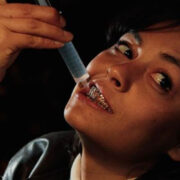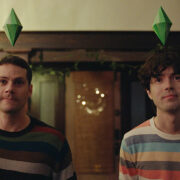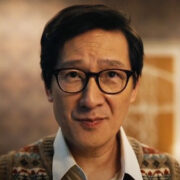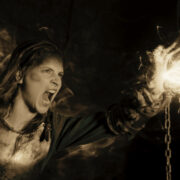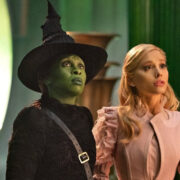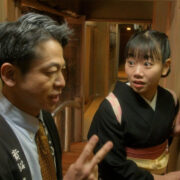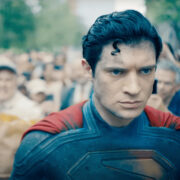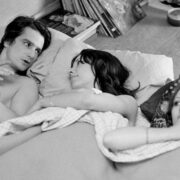Sleepy Hollow International Film Festival 2019: Afternoon Of DARK SHADOWS
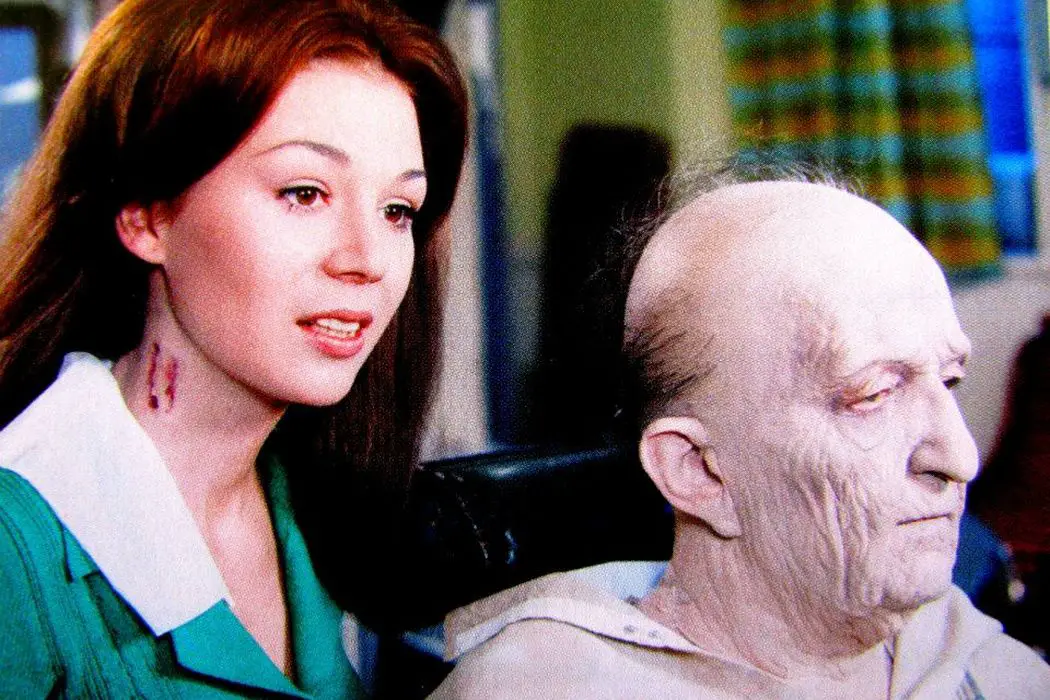
Jim Dixon retired from practicing law not a moment too…
Cult favorite Dark Shadows, the only daytime soap opera to ever spawn three feature films (in addition to a prime-time reboot), has a unique connection with the townships of Sleepy Hollow and Tarrytown, New York. Two of those feature films, House of Dark Shadows and its sort of sequel, Night of Dark Shadows, were both shot there, in particular at Tarrytown’s palatial Lyndhurst Estate. It seemed only natural that an afternoon of the first Sleepy Hollow International Film Festival should be devoted to the undying TV show, several of whose characters were themselves, well, undead.
Actress and author Kathryn Leigh Scott is remembered by millions of “Dark Shadows” fans as Maggie Evans and Josette DuPrés, the doomed fiancée of vampire Barnabas Collins. In its heyday, the original “Dark Shadow’s” daytime series (ABC-TV, 1966-1971) attracted 20 million viewers. The spooky, literate, romance and horror-driven show had universal appeal—and came to be known as the program “kids ran all the way home from school to watch.” Kathryn Leigh Scott was at the Festival all day on Saturday, autographing her latest novel, “September Girl”, and chatting with throngs of delighted fans of the soap opera about the undead that simply will not die.
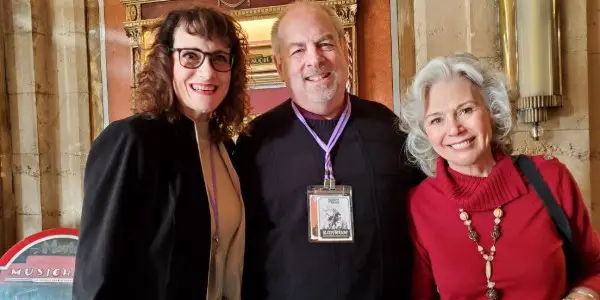
Why do you think Dark Shadows such enduring appeal? The show debuted in the mid-sixties— “April of 1966,” the veteran of the show’s first episode confirmed. The fans still love it, I mentioned. There were certainly plenty of them at the Festival.
“I think it’s because of the stories that are told,” she said. “And the fact that at the time, it was so innovative, nobody was doing that sort of an anthology series. The stories, of course, are based on, you know, classic tales. And I think it’s also the casting—the fact that the casting was so perfect. And we were able to do all of these other roles that work as a repertory company. I think all of those elements came into play. And I think it was the timing—the fact that Gene Roddenberry was doing Star Trek that same year, and so people had the idea of an ongoing series about something going into the future. And here we were with the Dan Curtis project. So I think there were many elements that made it popular.”
There was a recent online posting of the very first appearance of the specter of Josette on Dark Shadows. The show was still in black and white at that point, and the scene is very moody, very eerie. What did Ms. Scott think when she read that scene on the page?
She smiled. “So the script says ‘Josette walks out of the picture,’ and I had no idea how that was going to be accomplished. I was simply put against a blue screen and told to walk very slowly down this ramp. And the cameramen did the rest of the work and I was astonished when I saw the finished show, and I remember just gazing at it, marveling at the special effects.”
How did she feel when they started introducing supernatural elements into the story lines? Because the show started out just as a daytime soap with gothic atmosphere and elements— “I remember when they did, and that was when they introduced the ship’s captain, and he had been dead,” she said. “And then they introduced little Sarah. So there were hints that we were going

to do that. But I think that when Jonathan [Frid] showed up, but that was when we were getting into ghosts and goblins. And I think Dan just wanted to pull this stuff off. And thank God he did, because that’s what made Dark Shadows.” It must have been exciting to be part of the nationwide phenomenon that Dark Shadows became.
She has very definite recollections: “Well it was, because all of a sudden we saw boxes of fan mail in the rehearsal room, and of course it was all for Jonathan, and of course he was just so wonderfully popular. And he was so wonderfully down-to-Earth. And in fact, I will tell you this story, which I think is kind of funny. I don’t think Jonathan ever thought of himself as the star of the show—none of us ever did. And I remember when I went to see House of Dark Shadows, and then I thought, ‘Gosh, I’m in this movie a lot.’ And then I ran into Leonard Maltin sometime later and he just said, ‘Look, you’re the star.’ He said, ‘You realize you have more screen time than Jonathan.’ I am on the screen more than the vampire. But Dan created this family atmosphere where we all felt like we were pitching in and making a movie, and we were all pitching in and doing a TV series. We always thought of Joan Bennett as the star because she was a movie star. But none of us ever thought of ourselves as the lead or the star.”
And what’s next for Kathryn Leigh Scott? “What I’m excited about, is the fact that I am recording 32 of the vintage Marilyn Ross novels that came out in the 60s for audiobook,” she said. “So far I’ve recorded 16 of them and I think eight of them are available now. And I’ve never had so much fun because of all of the stories are from the viewpoints of Maggie Evans or Victoria Winters. They all have a similar formula—they’re told from the viewpoint of a young woman, and I was very pleased that they asked me to narrate all of them. I’m able to use my own voice for Maggie, and Victoria, and then I get to all of these wonderful accents a lot of different English accents, various American accents Italian, Far Eastern—it’s just wonderful. I’m having such a good time with that. And I get to do Barnabas and Quentin and Angelique. Angelique so far doesn’t appear in very many, nor does Quentin, but Barnabas does. And [Ross] says, of course, that he has an English accent. Well it’s not written in an English accent—” she laughs at this—”and Jonathan never used an English accent, so I’m using trans-Atlantic. But it’s really great fun.”
House of Dark Shadows: An Overdue Appreciation
When the house lights dimmed in the Tarrytown Music Hall, and the iconic, opening strains of Bob Cobert’s Dark Shadows theme came up behind the blood red opening credits of House of Dark Shadows, this critic was one again a twelve year old fan, awestruck at seeing his favorite TV characters on a big screen. The audience burst into spontaneous applause when Kathryn Leigh Scott’s name filled the screen—small wonder—she’d been in the house greeting fans for hours—and applauded even louder for her first shot onscreen. They applauded again for Jonathan Frid’s first close-up, looking perhaps a tad more sinister than he typically did on the show.

Taken on its own terms, the 1971 feature, based on the ABC soap opera, and with the TV cast, was filmed in roughly 30 days for a budget of well under a million dollars, and marked the feature directorial debut of series director Dan Curtis. He did an astonishing job, and House of Dark Shadows is one of the best old school vampire movies ever made. Tight, moody and distinguished by some genuinely gorgeous day-for-night photography by legendary cinematographer Arthur Ornitz, House of Dark Shadows was filmed on location in Sleepy Hollow, and at the famous Lyndhurst Estate in Tarrytown.
The movie’s script distilled a plot line from the show, but superimposed the character Maggie Evans (Kathryn Leigh Scott) into the governess position typically occupied by Victoria Winters (Alexandra Moltke). Barnabas Collins, a vampire chained in a coffin for the past two centuries, is accidentally freed in the 20th century by the treasure-hunting handyman Willy Loomis (John Karlen). (It’s been often stated, but bears repeating, that coffins are chained shut for a reason.) Once back at his former home, Barnabas becomes convinced that Maggie Evans is in fact the reincarnation of his long-lost fiancée, Josette DuPrés. Fans of the TV show were not prepared for the movie’s graphic violence, or the fact that Barnabas Collins, a romantic antihero on the show, behaved far more villainously in the movie. But in those days, vampires were bad guys, and no, Virginia, they didn’t sparkle in the daylight.
Dark Shadows was not the first vampire property set in the present day (the novel Dracula‘s Victorian setting was contemporary at the time it was published) but the popular British Hammer Films Dracula franchise had relied on period settings until after the release of House of Dark Shadows. Perhaps taking a leaf from the practice of the Hammer though, Barnabas Collins did not change shape in the movie, although he frequently transformed into a bat on the TV show.
The acting in the film is actually very good across the board, and Curtis showed a surer hand on his directorial debut than some filmmakers after several films. It was, as far this writer can ascertain, the first vampire movie ever to show blood flowing into the vampires’ mouths when they drink blood, and Dick Smith’s veal-mold neck wounds are startlingly realistic. The movie is also one of the first, and possibly the first, vampire movie to demonstrate the usefulness of the crossbow as a vampire-killing weapon. Curtis and co-writers Sam Hall and Gordon Russell had no hesitation in killing off popular characters from the TV show.
House of Dark Shadows Screening and Kathryn Leigh Scott Q&A
Following the screening of House of Dark Shadows, Kathryn Leigh Scott took the stage of the Music Hall for a Q&A, moderated by her longtime collaborator, Jim Pierson. Scott and Pierson have previously collaborated on five top-selling books about “Dark Shadows,” including Dark Shadows: Return to Collinwood, an in-depth look at five decades of the classic Gothic horror soap opera that made the vampire Barnabas Collins a pop culture phenomenon, and a coffee table book about the career of its creator, the late producer-director Dan Curtis.
Pierson narrated a slide presentation of rare, behind-the-scenes photographs from the TV series and the movies House of Dark Shadows and Night of Dark Shadows, many of them taken by Scott’s late husband, Ben Martin, a former Time magazine photographer whose work uniquely captured the turbulent decade of the sixties, and whose photograph of a haggard-looking Richard Nixon with a visible five o’clock shadow at the iconic Presidential debate with John F. Kennedy is said to have cost Nixon the election.
The movie’s vampire neck wounds were revolutionary, shockingly realistic at the time, were created by makeup legend Dick Smith (The Exorcist). Scott told the delighted audience they had their genesis in the veal cutlets Smith’s wife was making for dinner. She stuck one with a meat fork, and Smith’s creative eye saw it and he knew he had what he needed. The punctured veal cutlet became the mold for the neck wounds on the victims.
Producer Mary O’Leary, who managed late Dark Shadows star Jonathan Frid and produced his one-man shows, presented a trailer for the upcoming horror movie Loon Lake, which stars Dark Shadows alum Kathryn Leigh Scott and David Selby, a reading of “The Legend of Sleepy Hollow” by Jonathan Frid, and a series of TV interviews by Jonathan Frid and Jean Stapleton, Marion Ross, Gary Sandy and Larry Storch, his co-stars from the 1986 stage revival of the classic Arsenic and Old Lace. Frid played the role of homicidal maniac Jonathan Brewster, created on stage by the great Boris Karloff, and played in the 1944 Frank Capra movie by Raymond Massey.
The fans left more than satisfied, and it the afternoon cemented the venerable Dark Shadows franchise’s connection to Sleepy Hollow almost as deeply rooted as “The Legend of Sleepy Hollow” itself.
Does content like this matter to you?
Become a Member and support film journalism. Unlock access to all of Film Inquiry`s great articles. Join a community of like-minded readers who are passionate about cinema - get access to our private members Network, give back to independent filmmakers, and more.
Jim Dixon retired from practicing law not a moment too soon, and now works as a freelance writer and film critic. A lifelong and unrepentant movie geek, he firmly believes that everything you need to know in life you can learn at the movies. He lives in upstate New York.


